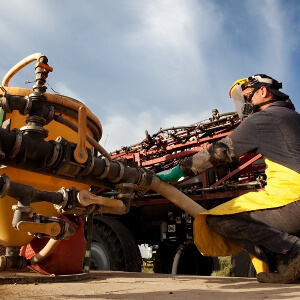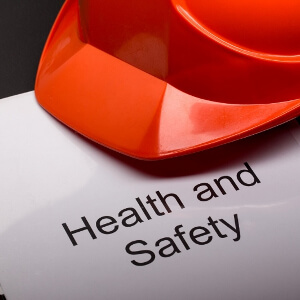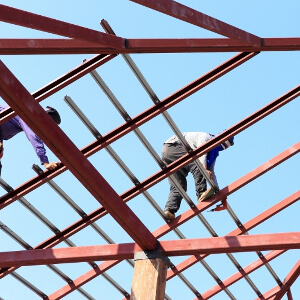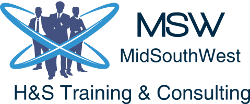All employees should understand the basics of hazard identification and reporting
|
Hazards are generally sorted into two broad categories:
Safety hazards exist when a person is at risk of sustaining an injury because of an incident. Unlike health hazards that sometimes take months or even years to appear, safety hazards are usually associated with the potential for immediate injury. The severity of the injury can range from a near miss, which doesn’t result in an injury, minor injury, major injury, life-changing catastrophic injury, and even fatality. The six types of safety hazards include:
Learn More about Hazard Identification Training. |
Quick Recap
|
All employees should understand the basics of hazard identification and reporting
Machine & Tool Hazards
|
Machine and tool safety hazards encompass all the various hazards associated with operation. Hazards include:
Potential injuries include ergonomic injuries, pinch and crush injuries, lacerations, partial or full amputation, burns, crush injuries, electrical shock, and death. |
 |
Energy Hazards
 |
Machine and tool safety hazards encompass all the various hazards associated with operation. Hazards include:
Potential injuries include ergonomic injuries, pinch and crush injuries, lacerations, partial or full amputation, burns, crush injuries, electrical shock, and death. |
Confined Space HazardsConfined spaces are fully or partially enclosed spaces that are not both designed and constructed for human occupancy, and they’re spaces in which atmospheric hazards may occur. A space must meet satisfy each aspect of the definition to be considered a confined space. Confined Space safety hazards are extremely dangerous as they’re typically atmospheric and sometimes unrecognizable. Examples include:
The potential for severe injury or death is quite high when working in a confined space. Workers must receive extensive training, including emergency response, confined space training, and training that is specific to the hazards they may encounter during the work before working in confined spaces. |
Material HazardsAny movement at work can result in an injury if it is not done properly. Material handlining safety hazards are especially pervasive in the healthcare industry, where workers lift, move, and manipulate patients of varying sizes and ability to assist, and in manufacturing, where you tend to see workers on assembly lines performing the same actions over long periods. Some hazardous activities include:
There is a sub-set of safety hazards associated with manual material handling of hazardous substances. All the material handling risks apply with an added need for specific safety measures for safe handling. |
Work Practice Hazards
|
Work practice safety hazards refer to faults or failures within the Internal Responsibility System (IRS). There are many hazards included under work practice, such as:
|
 |
Working at Heights
 |
Working at heights refers to any work performed above or below grade where there is a risk of injury caused by a fall to a lower level. It is important to understand that even falls of a few feet can result in catastrophic injury or death. Hazards include:
Like working in confined spaces, the potential for a severe injury or fatality goes up when working at heights, especially in the absence of proper training and a culture that supports reporting and proper PPE use. |
JHSC and RACE
All employees should understand the basics of hazard identification and reporting.
To ensure that your JHSC members recognize potential health hazards in the workplace, they need to be RACE masters. That is, the need to be able to Recognize, Control, Assess, and Evaluate hazards and hazard controls. JHSC certification training covers RACE in detail so that all certified members understand RACE and can apply it effectively in the workplace.
To ensure that your JHSC members recognize potential health hazards in the workplace, they need to be RACE masters. That is, the need to be able to Recognize, Control, Assess, and Evaluate hazards and hazard controls. JHSC certification training covers RACE in detail so that all certified members understand RACE and can apply it effectively in the workplace.
Trust MidSouthWest Training and Consulting
Training is key when it comes to having an effective and efficient JHSC.
MidSouthWest Training and Consulting provides JHSC training in association with Langlois Safety Training and Consulting Services, an approved CPO Provider. We offer in-house and on-site JHSC Part One, Part Two, and Refresher training. We also offer Hazard Identification Training. You can trust MidSouthWest Training and Consulting to provide you with cost-effective training solutions tailored to meet your organization’s unique health and safety needs.
To learn more, contact us online or call 289.309.1143. Visit us 24/7 on the web at midsouthwest.ca.
MidSouthWest Training and Consulting provides JHSC training in association with Langlois Safety Training and Consulting Services, an approved CPO Provider. We offer in-house and on-site JHSC Part One, Part Two, and Refresher training. We also offer Hazard Identification Training. You can trust MidSouthWest Training and Consulting to provide you with cost-effective training solutions tailored to meet your organization’s unique health and safety needs.
To learn more, contact us online or call 289.309.1143. Visit us 24/7 on the web at midsouthwest.ca.
Last updated October 12, 2022




